First off, thanks to Scott and company for asking me back for another guest blog. It is an honor to be a part of your network and ever-growing vault of information. It is amazing to me the outreach and sharing within the photo industry and how much we can learn from each other if we take the time to look and listen.
I receive many emails a year from photographers interested in shooting sports that ask me what type of camera and lighting I use. The truth is I use a wide range of cameras and a wide range of lighting techniques. I was fortunate to be the studio manager and first assistant for Dean Collins for several years. Dean was a master technician and taught me not only how to see light, but how to control it.
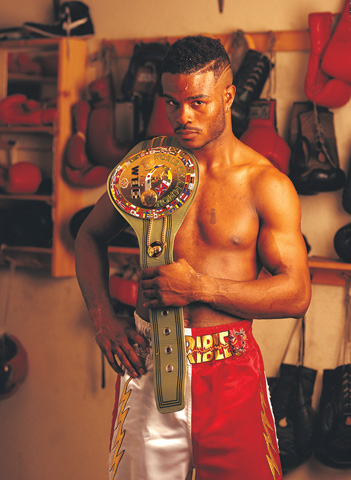
Terry Norris shot on 4×5 film with an 81B warming filter, 1992.
When I started my formal photographic education at Brooks Institute and early career with Dean there was no digital capture. Everything was shot on film and most commercial shoots were proofed with Polaroids. For all formats at Dean’s studio, 35mm, 120mm, 4×5 and 8×10, there were Polaroid backs that attached to the camera so we could test lighting and composition. Because this process was both time-consuming and expensive, you really had to think and react quickly to the desires of a client. The learning curve was much longer than shooting digital and I attribute much of my success as a shooter because I came from the “old school” of photography. Many of the techniques and creative processes I use when shooting today developed from this way of working and I believe have helped me to succeed in an ever changing and challenging industry.
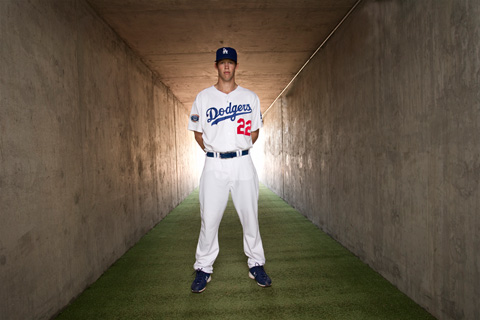
Clayton Kershaw shot on location in Arizona for Sports Illustrated
Understanding the relationship between ambient light and strobes can help to create drama in your portraits. Here the daylight behind Clayton is way over exposed to create the glow behind him while a strobe next to camera is used as the main light source.
When I am given an assignment, I make my best effort to shoot what the client needs and then also get at least one image for myself. These personal photographs have helped to shape my career and often are what now lead to more assignment work.
Since time is limited working with athletes, this is not always possible.
This image of Drew Brees was taken on the set while I was shooting the cover of EA Sports, Madden 11. The shot was lit with a Mola beauty dish that was located very close to Drew. The photo was converted to black and white with Nik Silver Efex Pro.
For the game box cover, we shot a large selection of action photos. Since there was a need for both video and stills for this shoot we elected to light the set with a series of “9 Lights” used primarily for motion picture. These tungsten light sources are very bright and would emulate lighting similar to that of a football stadium. This was not as critical in the stills, because of the ability to retouch, but more important for the reflections that would be visible in video in his helmet. Six of these lights where set up, three on each side of the set. Two large Chimera lightbanks with a 1K in each were used to add fill light from either side of the camera and help reduce shadows from the facemask. To give Drew a stable area to run on, artificial turf was rented and laid down. Because the shoot needed to be very discreet, the client wanted to shoot indoors. Not only did this environment give us control over the lighting, it allowed us to shoot action images from angles that would be impossible to create in a real game situation. Drew was a total pro and one of the nicest athletes I have ever had the pleasure to photograph. The final files were delivered to the client and the post-production and retouching completed by the design firm.
The shoot was very involved to coordinate and involved me hiring a video, sound and lighting crews, wardrobe and make-up artists, extras, a producer, a digital tech, assistants, catering and a motor home. In addition, a second shoot was done for the sports fans that appear on the box. This shoot also involved casting, wardrobe and make-up and a still crew. I think a photographer’s ability to produce and finance a shoot of this size is just as important to clients as your ability to shoot it.
Another shoot from last year involved shooting two MMA fighters, Randy Couture in Las Vegas and Fedor Emelianenko in Russia. In each case, both portrait and action images were captured using strobes on location with the final images being used for a variety of marketing and promotional materials.
An interesting opportunity that also came from this job was to create a game release trailer for a trade show. Since this was not part of the original assignment, I worked with a video editor and shooter, Jeff Wiant to create the piece. Using interview and some video footage Jeff and I shot on location, we integrated my still images by reshooting them in studio with the Canon Mark IV. 8×10 prints were made and then shot while we made focus and lighting changes to create dramatic visuals of the stills. We also contracted the music composition and oversaw the script recording.
I always enjoy using unique formats of cameras to shoot. Here are a few Polaroids I took while on assignment. The images were lit with a large Super Pro Chimera softbox. To get the Polaroid camera to fire the strobe, a strobe “slave” was attached to the end of a sync cord and it was taped to the small flash on the Polaroid camera. When I fired the camera’s flash, it triggered the softbox resulting in this nice window light.
When I have limited time with subject, my “go to” light is usually a large, Chimera Super Pro, which is 4×6 feet in size or a Chimera Octaplus. Both are beautiful sources for both studio and location and can make just about anyone look good. This photo of Tour de France winner Carlos Sastre was lit with a Super Pro and shot with my Wisner 20×24 View Camera on Polaroid film.
I love shooting outdoors with both strobe and daylight. Here a triathlete is lit outdoors with a large softbox and the daylight ambient exposure is slightly underexposed. This is the straight capture without Photoshop. Sometimes, less is more.
For this series of images, we shot 30 players in one day. This was one of two set-ups we shot for The Upper Deck Company. With only a few minutes per player on each set, I kept things simple and went with a Profoto ringflash with a soft white reflector and just let the guys be themselves.
This shot of Lance Armstrong was taken on Kodak EPP 4×5 transparency film and lit with four Kino Flo double, daylight tube sources. The transparency was then re-photographed onto Type 55 Polaroid. This black and white positive Polaroid was then re-shot back to 4×5 EPP during a long exposure. The only light source was a small flashlight that backlit the Polaroid. The tungsten source created this warm lighting effect on the daylight balanced film. Since Type 55 is no longer available, I have tried to achieve the same feel of this image using Photoshop, but can’t quite get the softness and light quality that this process created.
A few new images for Easton Hockey, shot on location on a white sweep on 35mm digital. Two Chimera striplights were used on either side of the set to create edge lights from 45 degrees behind the subjects. The main light was a Mola beauty dish on a boom arm positioned just above the athlete.
I shot the backgrounds on location on a separate day and added them in Photoshop. Using Nik Color Efex Pro and Silver Efex Pro, multiple layers of the images were merged together for the final images. The client requested this style of post work for the final images.
This year will mark my twentieth year since I graduated from photography school and I still love making images just as much. My best advice is just to play, explore and, most importantly, to grow into becoming yourself. Find your own voice in your work. If you don’t love what you are shooting, stop! Go shoot people, places and things you love and are passionate about, I promise that it will show in your images. Work on finding out who YOU are as a photographer and don’t get too caught up in all of the technology. Ansel Adams didn’t use Photoshop and said it best, “There is nothing worse than a sharp image of a fuzzy concept.”
Thanks for reading.
You can see more of Tim’s work over at Mantoani.com, keep up with him over at his blog and on Facebook, and check out his previous guest blog here.



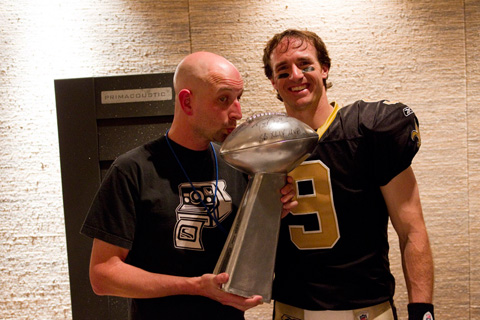
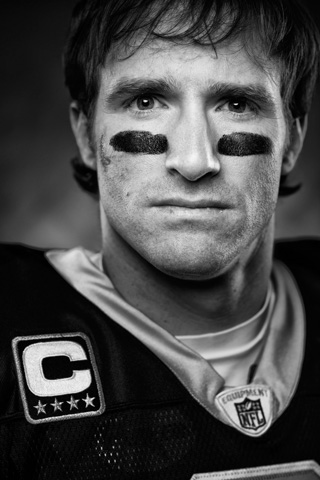
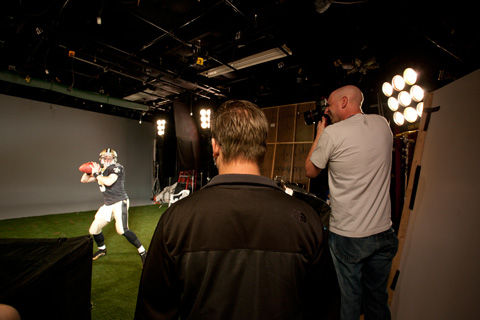

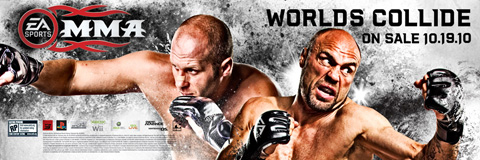
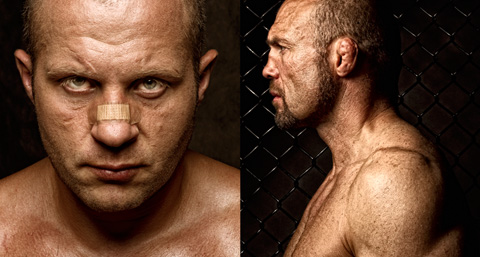
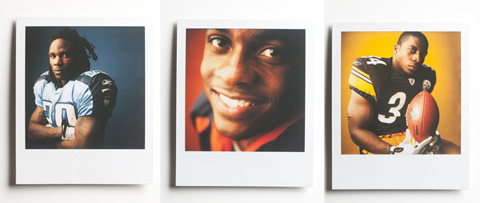
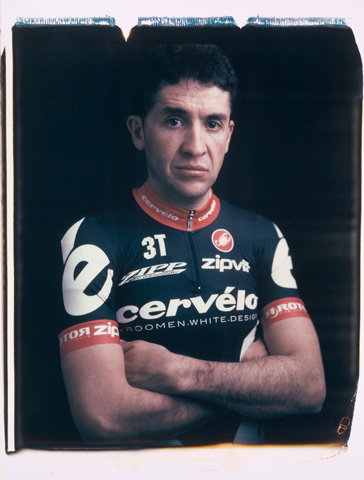
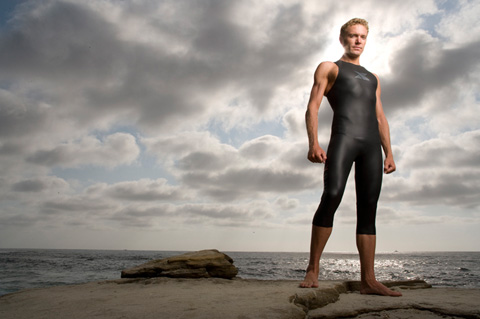
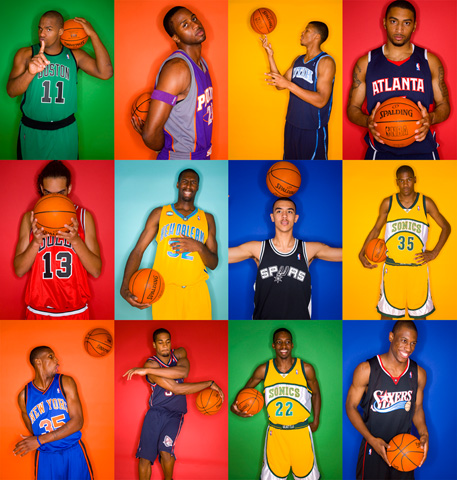
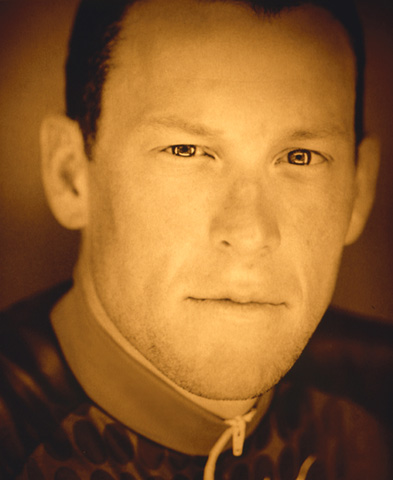
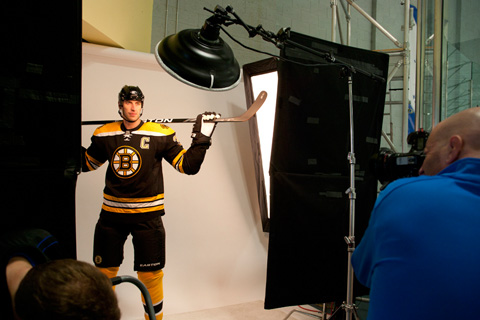
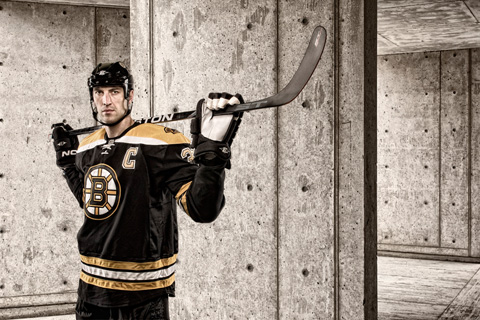
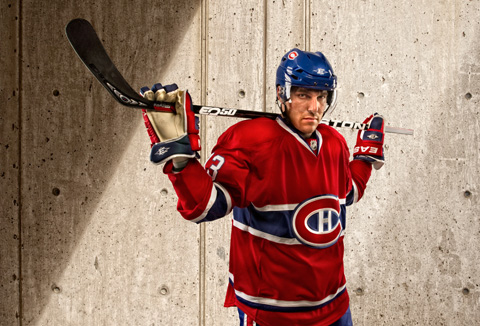
Another great Wednesday Guest Blog! A different “take” on shooting sports! Tim, I love the Drew Brees B/W shot.
Thanks for sharing!!
–John
Cool blog, I always wondered who shot that game cover! Now I’ll read the blog. 8-)
Great blog Tim,
your photographs really capture the essence of each athelete.
This is a really cool blog! :)
I usually play video games and I never knew who shot those shots.
Very impressive!
:)
Awesome, we need more sports photographers on here! Love your stuff! I’d really love a professional opinion on my website…
Duh, SPDIGITALPHOTO.COM
Great photographs and an excellent write up on shooting them.
I’ve been waiting for this post! Sports photography is my passion and your portraits are a huge inspiration to me. Thanks for sharing some BTS info.
I love your stuff, especially the NBA players grid. Our videographer showed me your site a while back and I love any photography involving athletics. Keep it up.
WOW!!! Beautiful Pictures…. I love it!!!
Great to see this guest appearance by Tim. I am a long time subscriber to his blog. I was surprised to find that no golf images were used as examples. Tim is one of my “go to” guys for golf image inspiration. No matter, great blog post either way!
Absolutely loved that blog post.. I too wondered about those Madden games.
Loved the non-Photoshop shot too. But the best shot gets the question..
Whered you get the polaroid shirt!!!!
Awesome job!
RC
Really sweet work, fun blog read too. Color me inspired!
It’s really interesting to hear about all of the work that goes into each shoot. I especially found the info on lighting helpful. Great post!
I love the Madden cover and MMA images!
What a great guest to feature! Awesome work Tim!
it was really awesome post! thanks a lot for sharing this nice post :)
very good article . hope to see more.
nice post and nice works done. Love this kinds of work and hope to see these kinds of images again.
[url=http://www.cobwebsdesign.com/]clipping path[/url]
Thanks for sharing. Wow, these collection is cool and very
useful for me right now.